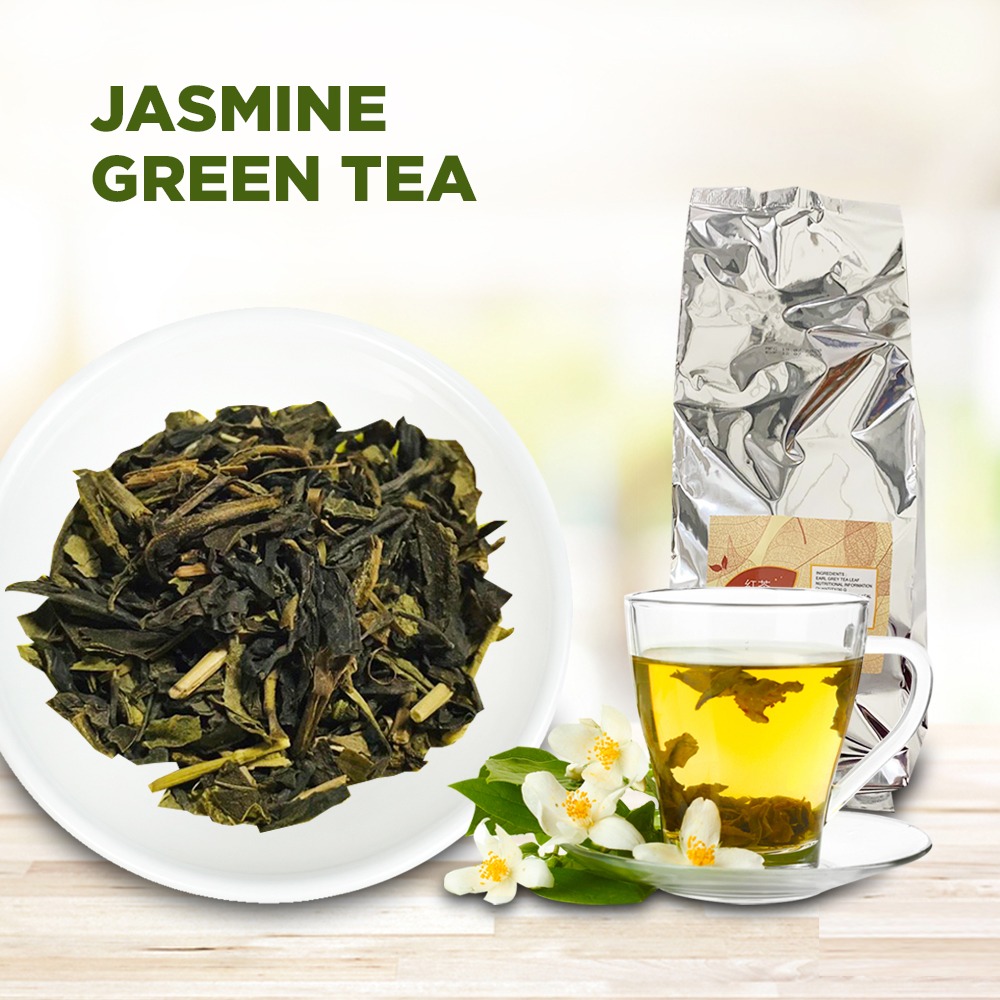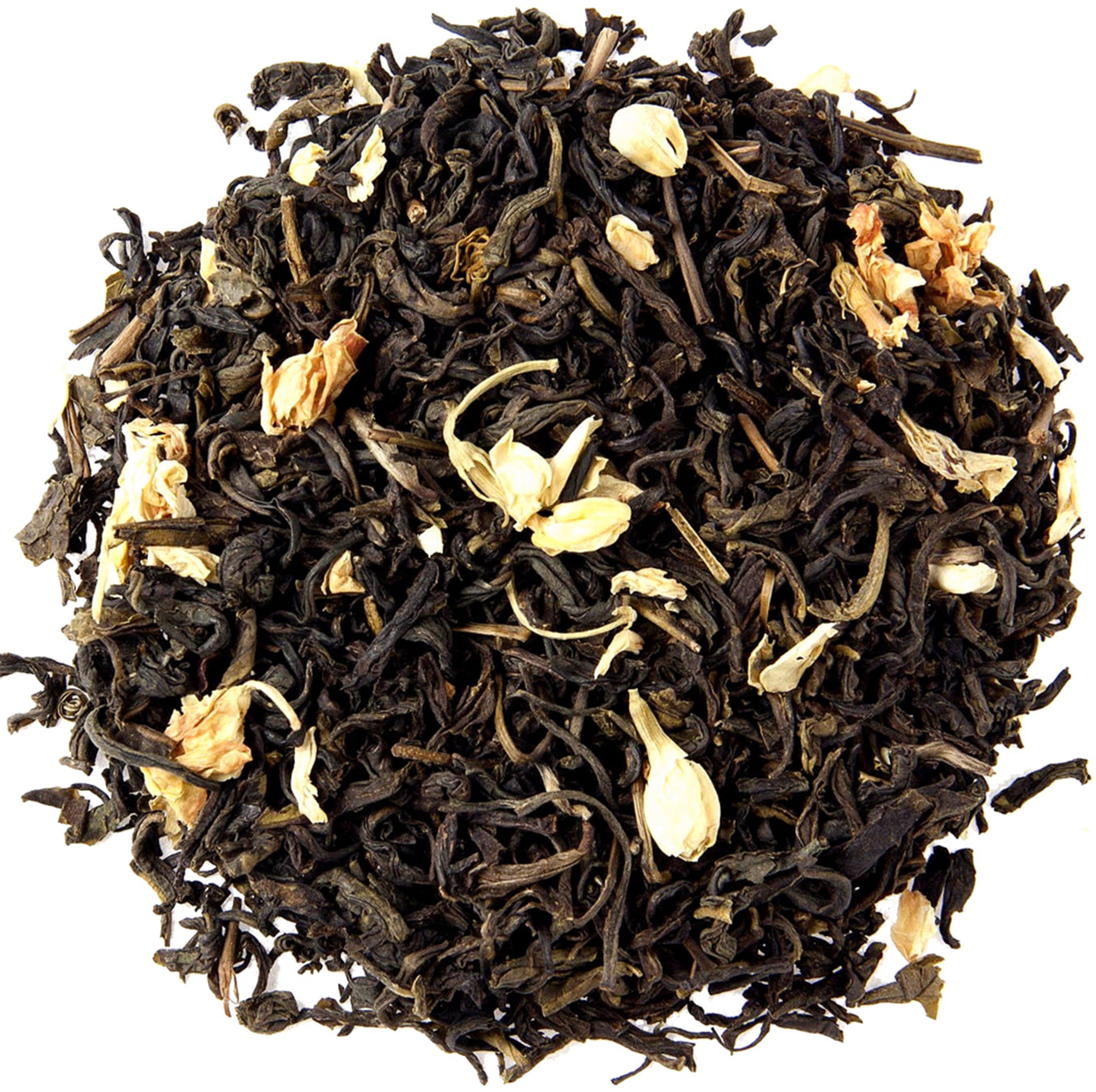
Jasmine Green Tea
Jasmine Green Tea: An Enchantingly Fragrant Infusion
Have you experienced the alluring aroma and flavor of jasmine green tea? This specialty Chinese tea tantalizes the senses with its delicate yet intoxicating floral bouquet. One whiff transports you to lush gardens filled with sweet-smelling blossoms. A sip delights with its light, uplifting taste. Jasmine green tea truly captivates like no other blended tea.
While jasmine’s heady fragrance may seem an unlikely pairing with vegetal green tea, the two create lovely synergy. The tea imparts a subtle grassy backbone that perfectly showcases the layered floral notes. Many consider jasmine green tea to be one of the most refined and graceful teas in the world. Its origins steeped in tradition only enhance its exotic allure.
So what makes this green tea variety so unique and enchanting? Let’s explore the special production process behind its creation.
Cultivating the Perfect Base
Only the finest Chinese green tea leaves form the base for making jasmine tea. Most prized are young leaves and buds harvested in early spring from Fuding and Guangdong provinces. These regions’ high elevations, rich soil, and misty climate nurture superbly delicate leaves. Their inherently smooth, velvety texture beautifully showcases the jasmine flavors.
Once harvested, the leaves must undergo the precise kill-green process. This involves firing or steaming the leaves to halt oxidation and preserve their emerald color and fresh, grassy aroma. Skilled tea masters then meticulously roll and shape the leaves into slender twists or pearl-like orbs. This shaping exposes maximum surface area for later scenting.
The Blooming of Jasmine
While green tea provides the base, jasmine blossoms grant their heavenly scent and taste. Producing authentic jasmine tea requires access to pure Sampaguita jasmine flowers (Jasminum sambac). Native to tropical Southeast Asia, these blossoms boast an exquisite, sweet fragrance unlike any other jasmine varietal.
Jasmine’s incredibly delicate aroma stems from over 100 distinct naturally occurring compounds. They include lush floral notes, hints of sweet ripened fruit, and even nuances of warm spices. Capturing and preserving this ephemeral scent requires extreme artistry and skill.
During peak blooming seasons, jasmine plantations abound in the Chinese provinces of Guangxi and Fujian. Workers spend cool early mornings meticulously hand-harvesting each individual blossom at its optimum point. The buds then get sorted, cleaned, and prepped for scenting.
An Intricate Scenting Process
The true art of making jasmine green tea lies in the scenting technique. In Fuding, Fujian Province, revered tea masters have perfected the process over centuries. Their labor-intensive methods create the highest quality and most fragrant jasmine teas.
First, the fresh jasmine blossoms get evenly dispersed across a canvas covering the green tea leaves. As day turns to night, the heat causes jasmine’s oils and scents to naturally release and absorb into the leaves. In the morning, the flowers get removed and replaced with a fresh batch. This delicate choreography repeats for 4-7 days, until the tea fully captures jasmine’s essence.
Throughout the scenting, skilled tea makers continually agitate and rotate the tea leaves by hand. This prevents bruising while ensuring even, thorough absorption of the floral perfume. Once complete, the scented leaves undergo several drying processes to lock in their heavenly fragrance.
Layered Floral Complexity
Jasmine green tea absolutely shines for its refined, multi-layered aroma and flavor. The first sip reveals bright top notes of fresh jasmine petals accented by hints of ripe stone fruits like peach or apricot. As it aerates, the floral bouquet unfolds into lush garden florals, orange blossom, and delicate rose.
Lingering underneath those heady layers lies the base of velvety green tea. Soft grassy notes delicately peek through like buds emerging from blossoms. Some vintages may even possess earthy, almost herbaceous undertones reminiscent of freshly walked moss.
This delightful interplay between the floral and green tea elements creates such dynamic complexity. Each sip captivates the senses in different, evolving ways.

Brewing the Perfect Cup
To fully experience jasmine’s charms, proper brewing proves paramount. The traditional Chinese gongfu method using a small gaiwan vessel allows the leaves to fully unfurl and release their aromatics. For western-style brewing, use approximately 1 teaspoon of leaves per 6-8 oz of water.
Heat filtered or spring water to around 175°F, as boiling water can scorch the delicate jasmine notes. Allow the loose leaves to steep for 2-3 minutes, removing the leaves once the desired strength develops. Avoid over-steeping, as it can cause bitterness.
For iced jasmine tea, use double the amount of leaves when steeping with slightly cooler water. This concentrates the aroma and flavor prior to diluting with ice. Lime or lemon pairs wonderfully to accentuate the florals. Or try jasmine tea lattes made with steamed milk or dairy alternatives. The rich dairy enhances jasmine’s creamy texture and fragrance.
Many tea lovers also enjoy jasmine pearls, which consist of hand-rolled jasmine-scented green tea wound into tightly furled balls. As they unfurl in the steeping water, it creates a stunning visual effect while infusing intense aroma.
Potential Health Benefits
In addition to its intoxicating taste and aroma, jasmine green tea may offer several wellness advantages. Like other green teas, it contains antioxidants like polyphenols and catechins. Studies suggest these compounds provide anti-inflammatory effects and may aid heart health.
Jasmine itself contributes additional antioxidants and compounds with potential benefits. These include promoting relaxation, aiding sleep, regulating hormones, and relieving menstrual cramps. The floral notes may also help relieve stress and boost mood.
When combined with green tea’s gentle energizing effects, jasmine green tea delivers a unique pick-me-up. It awakens the senses while simultaneously soothing the mind.

A Cherished Global Tradition
For centuries, jasmine green tea has graced the cultural traditions of China and Taiwan. Buddhist monks first began blending jasmine with green tea during the 6th century Song Dynasty. Over time, its popularity spread throughout China and across the globe.
In China, serving premium jasmine green tea exemplified hospitality and welcome. Upper classes would enjoy it while entertaining guests. Today it remains a celebrated part of the traditional Chinese tea ceremony. During the Qing Dynasty, the finest jasmine pearls were reserved exclusively for emperors.
This exalted beverage made its way to the West in the 19th century along the legendary Silk Road trade routes. By the 1800s, wealthy Europeans considered jasmine tea the most fashionable variety to offer in grand salons. Its evocative aroma and taste delighted and intrigued.
Today, authentic jasmine green tea remains prized and celebrated worldwide. Its ethereal scent carries unmistakable exotic romance and luxury. Each delicate sip beckons the imagination to wander through lush floral gardens and ancient tea traditions.
So brew yourself a pot of this enchanting elixir anytime you need a mental escape. Let the harmonious floral and green tea notes soothe your senses as you linger over jasmine green tea’s intoxicating charms. This delicacy embodies refinement in a cup!


